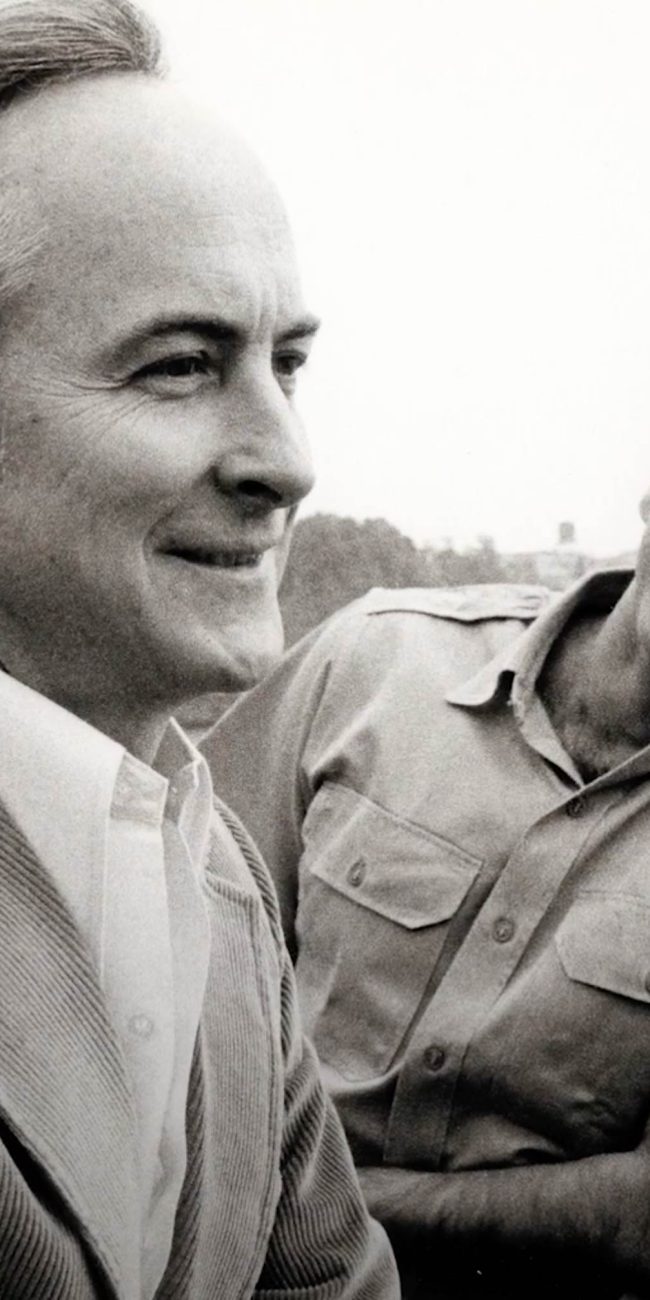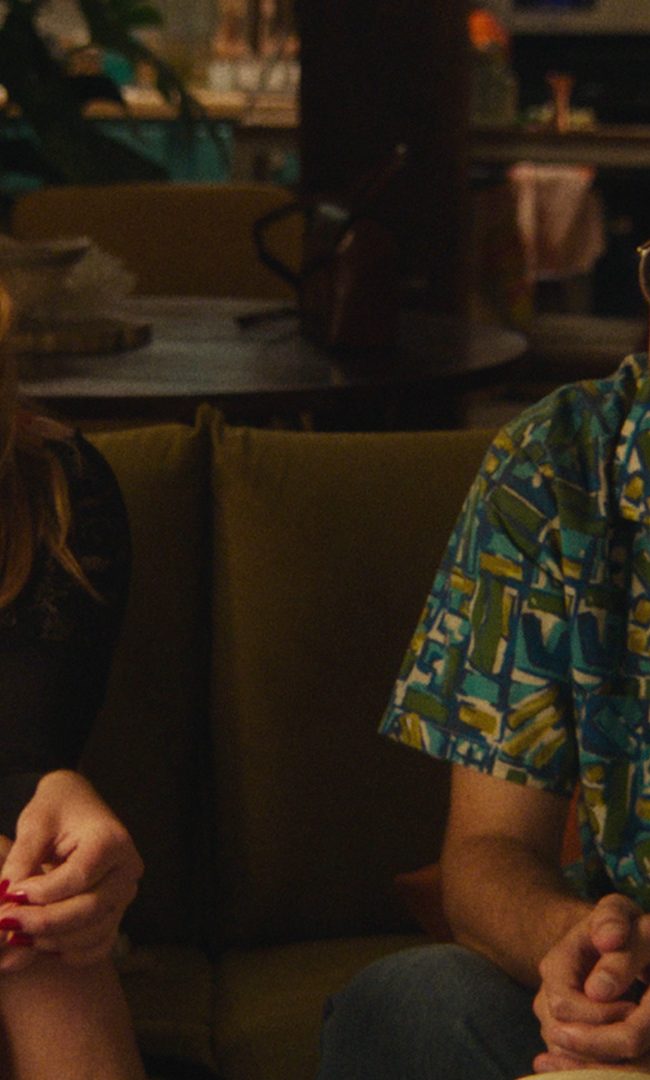
(In The Family is now available on DVD and Blu-ray. It re-opened theatrically in New York City at Cinema Village for a limited run on Friday, November 16, 2012. It first opened at the Quad Cinema on Friday, November 4, 2011, after previously screening at the Hawaii International Film Festival and winning two richly deserved awards at the San Diego Asian Film Festival. Visit the film’s official website to learn more. NOTE: This review was first published on November 3, 2011, as a “Hammer to Nail Pick of the Week” at the Filmmaker Magazine blog.)
***Full disclosure: I am not a film critic. I saw this film at the San Diego Asian Film Festival, where my film Surrogate Valentine was also in competition. I did not, however, have a chance to meet Patrick Wang.***
Every once in a while, a movie comes out of nowhere and hits you like a ton of bricks. First-time director Patrick Wang’s In the Family was like that for me. I sat down to watch the film knowing nothing about it besides the fact that it was an American indie, it was three hours long, and it was being exhibited in 35mm. At the very least, I thought, it has to be a curio.
In the Family is so much more than that. This is a monumentally ambitious film that tackles some of the biggest themes imaginable — identity, family, sexual politics, life itself — but presents itself in such a modest and unassuming way that its emotional wallop feels genuine and earned.
 In addition to writing and directing, Patrick Wang also stars as Joey Williams, a contractor in Tennessee who has a happy life with his partner Cody (Trevor St. John) and their son Chip (played by the amazingly natural Sebastian Brodziak). The movie settles into a natural rhythm as it allows the audience to learn about the characters through quiet observation rather than blatant exposition.
In addition to writing and directing, Patrick Wang also stars as Joey Williams, a contractor in Tennessee who has a happy life with his partner Cody (Trevor St. John) and their son Chip (played by the amazingly natural Sebastian Brodziak). The movie settles into a natural rhythm as it allows the audience to learn about the characters through quiet observation rather than blatant exposition.
And then, through a series of developments that I’d rather not reveal in detail, Joey finds himself alone. The remainder of the story plays out as an emotional thriller, in which the suspense comes not from the artificial spare parts of thousands of other movies, but from the choices faced by each of the central characters.
Wang takes big risks in his direction and writing, almost as though every decision were made in response to a dare. Many of the scenes featuring the terrific child actor Brodziak are filmed in daringly long takes, when conventional wisdom would say to “shoot lots of coverage of the kid!” The film itself climaxes with a no-frills deposition scene. Just a group of people sitting in a room and talking, yet every shot is filled with suspense and a sense of urgency. The scene lasts an astonishing 32 minutes (a friend in the screening I attended timed it), yet you won’t catch anyone checking his or her watch (unless it’s for the former purpose). I was impressed with Wang’s directorial discipline; he establishes a cinematic language early on, sticks with it to the end, and for the most part his high-wire act pays off.
I realize that this review might make Wang’s film sound like “eat your vegetables” cinema. That is not the case. In the Family is filled with life, humor and a tender understanding of human nature. Yes, it is long, but for the most part it races by, and I don’t think the length of the film will become the main talking point it inspires. Like Shane Carruth’s Primer, another fiercely original American indie that seemed to come out of nowhere, In the Family is miraculous by its very existence and will inspire a lot of conversations along the lines of “who is this guy, and how on earth did he make this movie?” This film is a must-see, an eye-opening debut that deserves to be part of the current film conversation.
— Dave Boyle












mike s ryan
Thanks Dave for this review, this is a great film, if you are in NYC today Sunday Nov 27, do not miss it! It reminded me a lot of late Bresson and Edward Yang. Shame on every festival programer who did not accept this film. This actually may indicate that there is something deeply wrong in the way that festivals view submissions. We should put some of the programmers who rejected the film on the spot and demand an explanation that will help us understand how this gem ALMOST fell through the cracks.
Charles Dilmot
While we’re grilling festival directors, per Mike Ryan’s suggestion below, it might be helpful to keep the lights on and put producers in the same chair. Why, for example, are so few of them willing to take on formally inventive material, of the kind described here?
There could be good reasons: the difficulty of assessing non-formulaic, “execution dependent” scripts; the investment climate; Sundance; even the possibility that producing skills go only so far, that it may take more than a love of movies to assess scripts, that it may demand actual affective ability.
As one of the more self-critical producers around, maybe Mike Ryan would care to start?
Tully
I think you make an interesting point, Charles, but challenging Mike Ryan about his choices is a somewhat silly thing to do. Check his IMDB page. He’s one of the few who consistently fights the good fight. As for dozens of other producers we could name, yes, they are indeed out there.
Sammy D.
Mike Ryan’s filmography is beside the point. He can accept as little or as much blame as he wants, and still address the issue. If we mentioned the other producers who “are indeed out there”, their defenders would also come forward to claim that it’s all somebody’s else fault, that their guy producer is nothing but self-sacrifice, unfailing insight and virtue, and how dare you say otherwise.
Festival accountability to filmmakers and producer responsibility for independent film are the two forbidden subjects. You could sit through a thousand hours of symposia, panels and seminars, and not hear either question raised, much less addressed. Which is remarkable control of the discourse, when you think about it.
How about we give Mike Ryan a crack at it?
mike s ryan
There is no grand conspiracy at work regarding formally challenging films. The reality is there are very few American producers who are actual fans of formally challenging cinema.The reason may be financial—producers must find a way to interact with the marketplace—but I suspect it’s just simply that few producers enjoy watching say a Pedro Costa, Jake Mahaffy, Tsai Ming-liang, or Joe Weerasethakul film.The reality is that in America, filmmakers, film schools, audiences and the marketplace are slaves to plot-driven films. The concept that a film can value form and structure above plot is just by American standards ‘avant garde’.If you value cinema as ‘art ‘ rather than purely entertainment, you are in a very small minority in this country and financial environment. This doesn’t mean we can’t make these films, it just means it is harder and we have to make them for very low budgets and thus for next to no financial return for all involved.
doghouse
I wonder if it’s that simple. Looking at international art-house cinema as a whole today, there are any number of formally accomplished but plot-driven and seemingly accessible films around which, from all appearances, would have a very hard time getting made in the U.S. Perhaps this reflects the way films are financed in the U.S., or who goes into the medium as a writer or director. But the peculiar characteristics of American independent features would seem to reflect more than a lack of producer interest in the kind of films made by Pedro Costa, Tsai Ming-liang, or Joe Weerasethakul. There are whole realms of thought and feeling which are apparently off-limits in the American indie world, even as the favored product typically flops at the box office.
Pingback: A Conversation With Patrick Wang (IN THE FAMILY) – Hammer to Nail
Pingback: THE 2011 HAMMER TO NAIL AWARDS – Hammer to Nail
Pingback: HOME VIDEO PICKS – Hammer to Nail